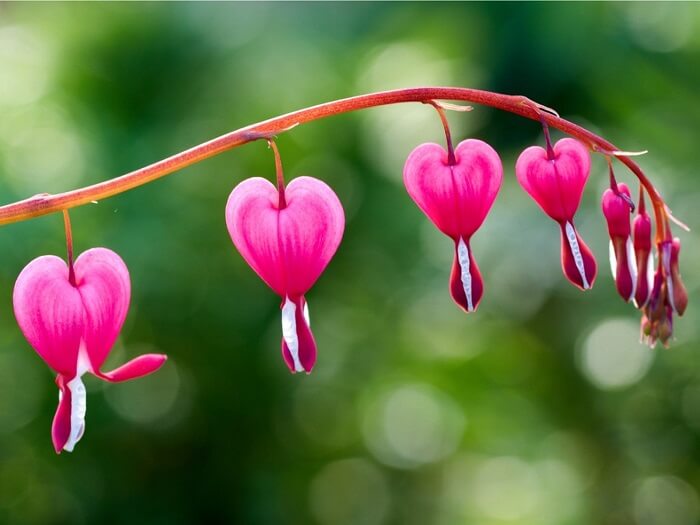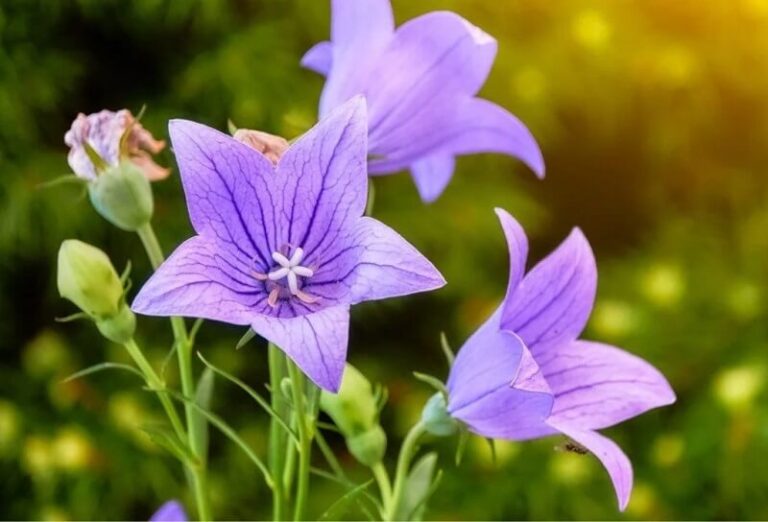The sun bride bears the botanical name Helenium and is a beautiful and easy-care summer shrub that is becoming increasingly popular in the local gardens. Due to its robust frost resistance and good growth vigor, the plant will delight the heart of every gardener for many years and will continue to spread quickly on its own. The flowers shine in a varied color palette and have made the perennial and its various types and hybrids a widespread ornamental plant for the garden. The sun bride thrives particularly well in sunny locations, but can also get by with a place in sun-drenched penumbra. With the right care, the attractive perennial blooms profusely and colorfully all summer.
Table of Contents
Location, plant substrate, plants
Since the sun bride spreads quickly, the perennial plant needs enough space to develop freely. The sun bride needs a spacious, sunny location that is open on all sides for it to thrive. The perennial loves sunlight, a fact that is already clear from its name. It cannot develop particularly well below trees, bushes and other large plants, and it would lack sunlight here. The location should be protected from wind and weather so that the flowers are not bent over by strong winds and heavy rain. When planting in a tub, make sure that the tub is large enough.
For an appealing development, it needs a well-cultivated garden soil with sufficient nutrients. The maintenance effort is very low, the easy-care Helenium is extremely robust and durable. As long as the ground is no longer or not yet frozen, you can plant.
- locations in full sun are ideal
- Sun-flooded penumbra possible
- Shady places are not tolerated at all, flowering and growth fail here
- Prefer protected locations
- Planting in pots is feasible
- Well-drained, slightly moist and nutrient-rich plant substrate
- Prefer soil rich in humus
- Spreading mulch against drought
- Planting time is between spring and autumn
Watering and fertilizing
The sun bride thrives best in slightly damp soil, but too much moisture can damage the plant. In order to adequately protect the Helenium from prolonged drought, it is advisable to apply moisture-retaining mulch. Short-term drought is better tolerated than waterlogging, so the top layer of soil should always be dry before watering again. Newly placed plants have to be watered a lot and constantly during the initial growing season. The application of a fertilizer is particularly recommended when the perennial sprouts in spring, afterwards cyclical fertilization applications are desirable.
- Watering regularly and enough
- Avoid damaging waterlogging
- Too much drought leads to stuntedness
- Check the soil with a finger test before watering again
- Use fertilizer especially in spring
- Monthly and weak fertilization
Growth, leaves and flowers
The flowers often shine in two colors and shine in a varied color palette. The cup flowers of the perennial are very similar to the daisies or daisies and have a spherical center, the dark green leaves provide a decorative background. The flower stalks are covered with the leaves at the bottom and the umbel-like inflorescences at the top. The growth is upright and can reach a human-sized height with a corresponding girth. The sun bride brings an atmospheric ambience especially to an autumn garden and beautifies any location. In order to extend the flowering time of the Helenium, the front part of the stick should be shortened by half in May. In a free-standing position, the perennial is very grateful for support due to its size.
- Golden yellow, orange, red and maroon flowers
- Special breeds and hybrids in bronze, copper and mahogany tones
- Wheel-shaped and flat flower shape
- Long-lasting flowering time depends on the variety, usually between July and September
- Some varieties bloom until October
- Narrow and elongated foliage in a dark green
- Height: 50 – 160 cm, width 40 – 50 cm
- Upright, bushy and clump-like growth habit
- Support tall growing varieties with stakes or something similar
- Suitable as cut flowers for the vase
- Leaves and flowers wither extremely quickly in drought
Cutting and wintering
Due to the rapid growth, regular pruning is very advisable. The leaves often stay green until the first frost breaks and therefore only need to be trimmed if there is not enough space. The stability of the plant can be increased if the tips are cut off at the shoot. Carry out this stripping only until the first buds sprout, after which the plant suffers from the cut. Despite its lovely flowers and graceful growth habit, the sun bride is very hardy and, with the right protection, can also tolerate extremely cold winters, with icy temperatures and persistent snowfalls. In order to get the helenium safely through the winter, waterlogging must not form in the root area at any time.
- Cut off faded flower stems regularly
- Remove dead leaves promptly
- Plan a radical cut in autumn or winter
- Prune the plant close to the ground
- Frost hardy plant
- Cover with mulch, brushwood, fleece or jute for the winter
Propagation and implantation
The sun bride can be propagated relatively easily, the vigorously developed stems of the perennial are ideal for a successful result. The root system with the sticks has to be divided and reinserted approximately every three years. To do this, a part of the edge of the roots is cut off with the spade and this is planted in another place. For this process it is necessary to throw away the already consumed parts inside the perennial and use only the outside. An ideal time is either the beginning or the end of the growing season. In order to ensure that the new perennials grow properly, sufficient watering is of great importance.
The helenium can also be propagated using seeds, for which the seeds must be collected in autumn. These are very small and should therefore only be sown in flower pots in April, the germination period is up to 2 weeks. If you don’t want to harvest seeds for propagation, you should cut off the flower stalks just above the last pair of leaves. This process also stimulates the formation of new flowers.
- Propagate in spring or autumn
- Use basic cuttings
- Divide the root ball with sticks
- Division should be done every 3 – 4 years to rejuvenate the plant
- Plant at a distance of about 30 cm
- Water the cuttings sufficiently and regularly, especially at the beginning
- Can be sown with seeds
- Germination time: 7 to 14 days
Repotting and moving
Due to the rapidly expanding growth, the sun bride often puts the neighboring plants in distress and can also lead to their complete death. If the helenium gets out of hand, a move or a downsizing is necessary to protect the other plants and for a balanced development of the perennial. In the new location, it is important to ensure that there is sufficient space. The same problem arises when keeping the roots in pots, if the roots look out from below, repotting is necessary.
- Moving is possible without any problems, can be used for a rejuvenation
- Repot when roots stick out of container
- Plan plenty of space for future development
Variety of varieties, hybrids and plant neighbors
The sun bride, known and widespread in this country, is a more extensive breed, the wild species are mainly found in California. The Helenium distinguishes around forty species, of which the Helenium autumnale and its hybrids are very popular. The plant belongs to the genus of the daisy family, just like the coneflower and the goldenrod. Smaller flowers and shrubs are more suitable as plant neighbors, as the sun bride quickly takes up a lot of space.
- Hybrid varieties fascinate with unusual color nuances
- Building director Linne, red flower, height: 120 cm
- Ball sun, light yellow flower, height: 160 cm
- Moerheim Beauty, copper-red flower, height: 90 cm
- Flower table, yellow flowers with a brown center, height: 120-130 cm
- Gold lacquer dwarf, red-brown petals with a yellow center, height: 70 cm
- Gold rush, golden yellow flowers, height: 140 cm
- Kanaria, yellow and slightly curved petals with a spherical and large center, height: 120 cm
- Mahogany, red-brown flowers with yellow tips, height: 90cm
- September gold, golden yellow and late blooming flowers, height: 110 cm
- Waltraud, golden-brown petals with a yellow center, height 90 cm, rather compact growth
- Suitable plant neighbors: aster, blue loosestrife, flame flower, goldenrod, golden sheaf, delphinium, coneflower and various ornamental grasses
- Different mix of varieties results in a colorful overall picture in combination
Diseases and pests
If the weather is permanently damp, snails in particular can cause severe damage to the sun bride by eating. Therefore, the perennials should be constantly checked for snail infestation. It is advisable to take preventive measures as early as spring so that the first shoots of the plant do not fall victim to the snails. Furthermore, there can be an infestation with aphids in places, in many cases these are transmitted through the neighboring plants. Most pests and diseases are not relevant to the robust helenium.
- Constantly control plants, especially in rainy weather conditions
- Keep collecting snails
- Early application of slug pellets
- Set up snail traps
- Spread bark mulch around the clumps as a natural barrier
- Wash off aphids with a mild detergent solution
Conclusion
The sun bride is a colorful perennial with wonderfully bright flowers, which is an ornament for every garden area. Due to the many color nuances of the different varieties and hybrids, each flowerbed shines in a colorful kaleidoscope, which, due to the color tendencies, creates an autumnal ambience. Due to the easy-care properties and the uncomplicated propagation of the perennial, the gardener has a wide range of uses. All you have to do is ensure a regular water supply and a sun-drenched location so that the Helenium can thrive excellently.


